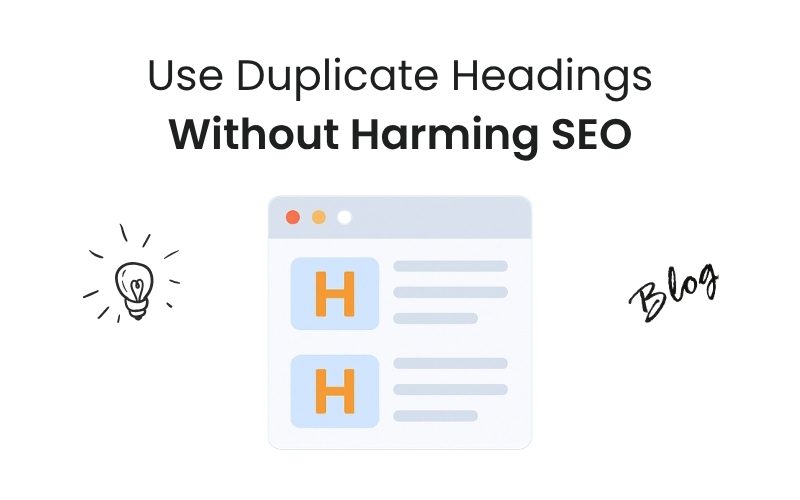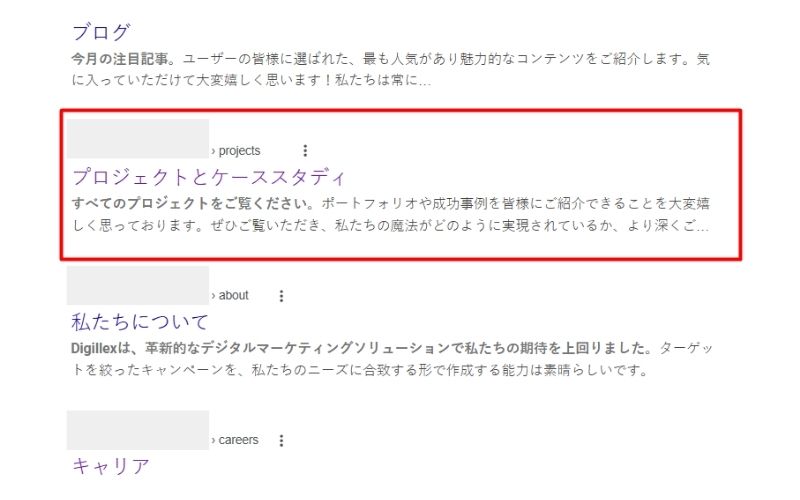Duplicate headings are fine in tightly-structured lists (if you’re working on product grids or event calendars). Elsewhere, they confuse search engines and readers, so use them sparingly and mark them up correctly.
Case Study
Handling duplicate headings in a client project.
On a recent client build, we were asked to repeat the same heading text across dozens of items, which was great for their design mock-ups, but not so great for our SEO instincts.
Before we hit publish, we ran the page through our audit stack and confirmed that duplicate headings can be entirely safe if you provide Google with enough context and maintain a clean hierarchy.
Here’s the short rule-book we follow.
Btw, when a layout demands identical titles on dozens of cards, first step back and hunt for fresh web creativity that solves the UX without breaking SEO.
When Duplicate Headings Are 100 % Acceptable
Duplicate headings work fine when the page structure itself makes their purpose obvious.
Think of a product grid (or product listings): every card may share the same short model name, but the entire grid sits under a single, unique section title that tells Google, “these items belong together.”
Event calendars (or News/events grids) follow the same logic, each date box can repeat the event title because the calendar wrapper already supplies context.
You can also reuse a phrase at different heading levels; for example, a bold <h2> feature title that reappears inside each item as a smaller <h4> caption. Because the hierarchy changes, search engines and screen-readers treat the repeats as separate, semantically clear elements rather than confusing clones.
If you’re fuzzy on what makes a heading ‘semantic,’ skim our quick web development glossary to brush up on the core terms.
Key Point: The surrounding section (parent heading, list, or grid) must explain why those items belong together.
When Duplicate Headings Turn Into SEO Debt
Trouble starts when the same wording shows up where uniqueness is essential.
If several pages carry identical <h1> tags, Google struggles to decide which one represents the topic, often weakening rankings for all of them.
On a single page, back-to-back identical <h2> tags with no parent context look like thin or auto-generated content, signalling low quality.
Accessibility also takes a hit: users who navigate with screen-readers rely on headings to skim, and hearing the same line twice in a row slows them down.
Finally, analytics tools that group engagement by heading text can no longer tell which copy held visitors’ attention, muddying your data and any UX decisions that depend on it.
Good vs. Bad Implementation (Mini Checklist)
| Bad SEO Approach | Good SEO Approach |
|---|---|
Repeating the same <h2> five times in a row with no wrapper. | Wrap items in a parent <section> with its own unique heading, then keep the duplicate item titles at <h3> level. |
Using identical <h1> on different pages (e.g., “Our Services” site-wide). | One unique <h1> per URL; reuse the wording inside body copy or lower-level headings if needed. |
Duplicating headings on a single page and in the <title> tag. | Keep the <title> unique; duplicates, if justified, live only inside the content area. |


Multiple <h2> in one section? Totally fine for listings, as long as the structure is clear and the section already explains the common intent.

<h2> headings in a single section: A clean hierarchy—<section> → unique <h1> → unique <h2> per item—keeps both SEO and accessibility intact.How to Audit Your Headings
| Tool | Where to Look | What to Fix |
|---|---|---|
| Screaming Frog (free up to 500 URLs) | Reports → H1 / H2 → filter “Duplicate.” | Merge, demote, or add parent sections until only permissible duplicates remain. |
| Ahrefs Site Audit | Content quality → Headings; flag “H1 duplicates.” | Same clean-up as above; use the “View affected URLs” link to spot patterns. |
| Google Lighthouse | Best Practices tab highlights multiple <h1> issues. | Ensure a single, descriptive <h1>; shift repeats to H2/H3. |
| WAVE Accessibility Checker | Heading Structure panel. | Confirm logical order (no H4 jumping above H3) and uniqueness where helpful. |
Developer / Editor Action Plan
- Set one unique
<h1>per page non-negotiable. - Group repeated items under a parent heading (
<h2>grid title → repeated<h3>cards.) - Write descriptive section headings so duplicates inherit context.
Keep those headings readable, think meaningful phrases, and sizes set with the right CSS sizing units so accessibility stays intact. - Run an automated crawl before launch; sign off only if duplicates appear exclusively inside approved patterns above.
- Spot-check with a screen reader (NVDA or VoiceOver) to ensure navigation still makes sense.
Bottom Line
Duplicate headings aren’t automatically an SEO sin. They’re a design choice that needs semantic guardrails.
Give every repeat a clear parent, keep your top-level headings unique, and you’ll stay on Google’s good side and your users’.





